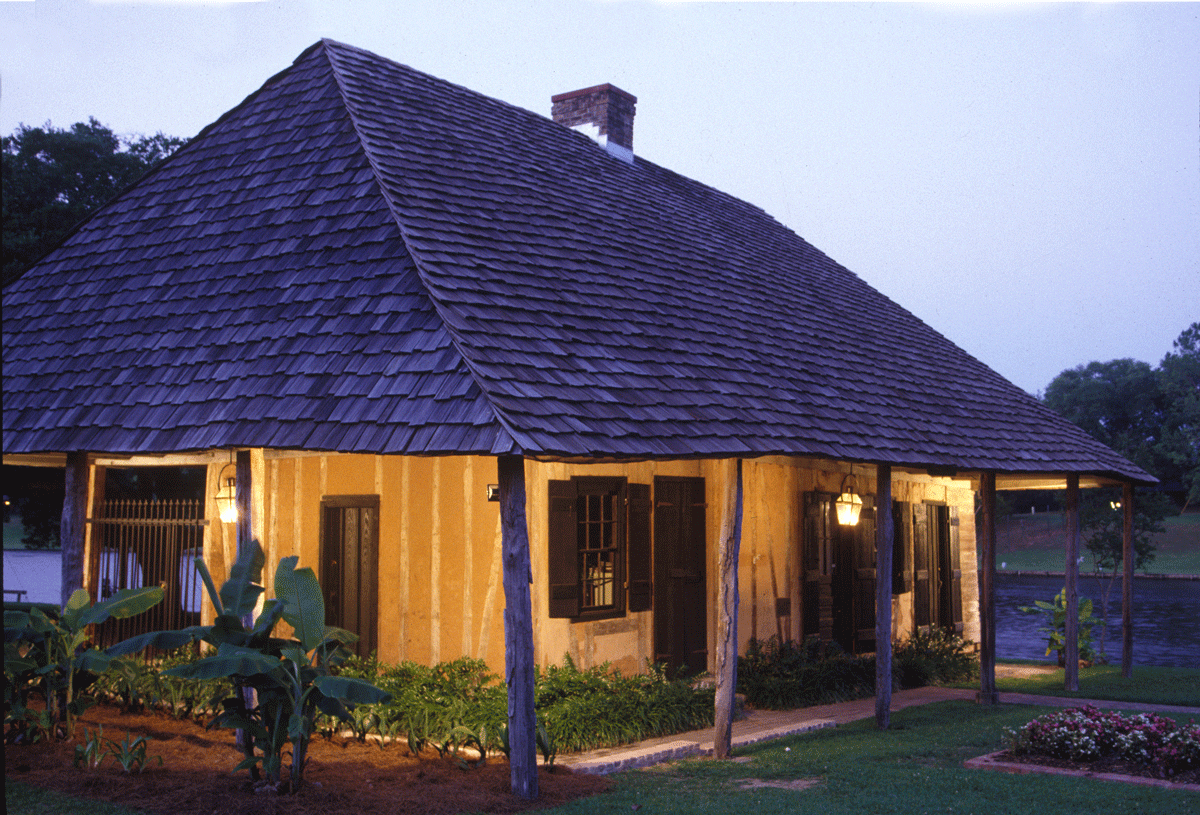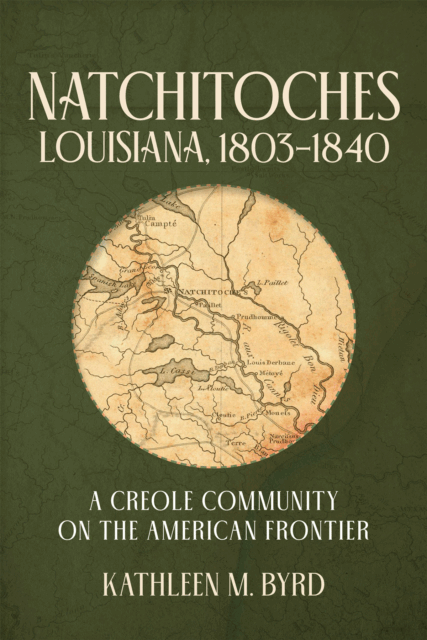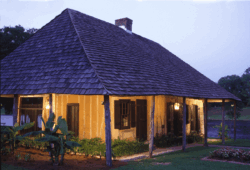Winter 2024
“A Meanly Built Village”
An excerpt from Natchitoches, Louisiana, 1803–1840: A Creole Community on the American Frontier
Published: December 1, 2024
Last Updated: February 28, 2025

LSU Press
Roque House. From Natchitoches and Louisiana’s Timeless Cane River by Philip Gould.
In Natchitoches, Louisiana, 1803–1840, Kathleen M. Byrd examines one French Creole community as it transitioned from a fur-trading and agricultural settlement under the control of Spain to a critical American outpost on the Spanish–American frontier and finally to a commercial hub and jumping-off point for those heading west. Byrd focuses on historic events in the area and the long-term French Creole residents as they adapted to the American presence. She also examines the effect of the arrival of the Americans, with their Indian trading house and Indian agency, on Native groups and considers how members of the enslaved population took advantage of opportunities for escape presented by a new international border. Byrd shows how the arrival of Americans forever changed Natchitoches, transforming it from a sleepy frontier settlement into a regional commercial center and staging point for pioneers heading into Texas.

The village of Natchitoches in 1803 was anything but imposing—at least to northern eyes. John Sibley, a New Englander and a recent arrival to the area, describes the town as a “small, irregular and meanly built village, half a dozen houses excepted,” of “about forty families of which twelve or fifteen are merchants, or traders, nearly all French.” Forty years earlier the village of Natchitoches had been much larger, but the decrease in the Indian trade and the increase in the importance of agriculture resulted in many of the families moving from the town to outlying plantations. The area “downriver” from the village had become thickly settled with “a number of wealthy inhabitants” who grew cotton, corn, and tobacco. In 1802 the Natchitoches planters had shipped almost three thousand bales of cotton and a large amount of high-quality tobacco to New Orleans. But as Sibley noted there was not a single water-driven mill in the area. Horses powered the cotton gins, and it had only been in the last twelve or fifteen years that an Irishman from Pennsylvania had introduced a ferry to cross the river and the plow for agriculture. Sibley also observed that there was not a “single mechanic, in the district, who is a native to it, one tailor excepted; every thing of the kind is done by strangers, and mostly Americans. . . .”
Toward the end of April 1804, Captain Edward D. Turner with soldiers of the Second Infantry Regiment and artillerists arrived in Natchitoches. Undoubtedly, the arrival of the American force created quite a stir. The flotilla of boats had passed numerous farms and plantations, and news of the Americans’ pending appearance undoubtedly spread rapidly. Unquestionably, the Spanish post commandant Felix Trudeau would have been there to meet the Americans upon their landing. It is easy to imagine the merchants and traders with their families, town slaves, and visiting Indians lining the riverbank to watch the soldiers disembark and then set up camp. The insignificant Spanish force of seven or eight men readily yielded the area to the Americans. How welcoming the local French and Spanish people were is uncertain, but it is likely that Americans living in the area were pleased to see the United States’ troops. The American military force was to have a commanding presence in the area for the next fifteen years.
The official transfer ceremony occurred on April 26. At 11:00 in the morning, Captain José Joaquín de Ugarte, the commandant at Nacogdoches, Texas, and the Spanish representative at the transfer, officially turned the settlement over to the French designee Felix Trudeau, and the Spanish flag was lowered and the French flag raised. Then at noon, Captain Turner accepted the outpost from Trudeau and the American flag flew over what was now the farthest western outpost of the United States.
The Spanish, who had been suffering for years from inroads into Texas by first the French and more recently the Americans, wanted the frontier closed. José Joaquín de Ugarte was heard to utter, “It is now finished, and the door is shut forever.” This was wishful thinking on the part of the commandant. The frontier settlement of Natchitoches was to become the American gateway to Texas and Spain’s Interior Provinces. In the early 1800s Natchitoches’s strategic location made it third in importance only after New Orleans and St. Louis, and activities in the Natchitoches area and along the Red River would bring Imperial Spain and the brash, young United States of America to the brink of war.
Excerpt from:
Natchitoches, Louisiana, 1803–1840: A Creole Community on the American Frontier by Kathleen M. Byrd
$34.95; 272 pp.
LSU Press (November 2024)

